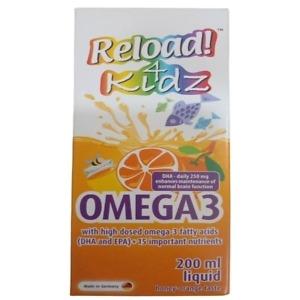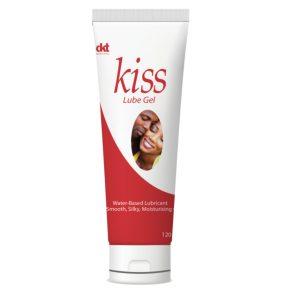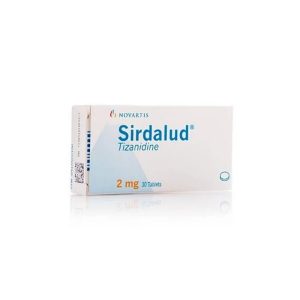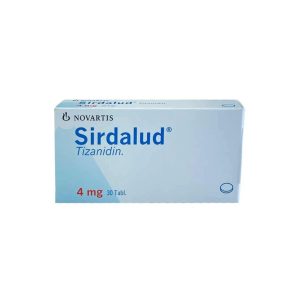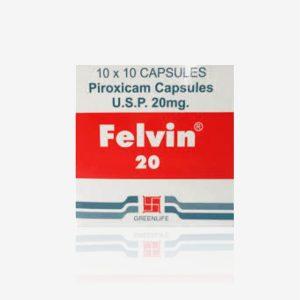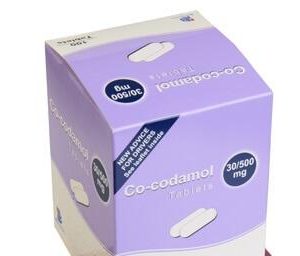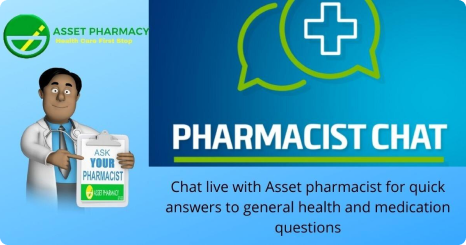Description
Clenil Modulite 200mcg Inhaler, 200 Doses
What Clenil Modulite 200mcg Inhaler is and what it is used for?
Clenil Modulite 200mcg Inhaler is a pressurised inhalation solution is used to help prevent the symptoms of mild, moderate or severe asthma. The active ingredient Clenil Modulite 200mcg Inhaler, beclometasone dipropionate, is one of a group of medicines called corticosteroids which are often referred to simply as steroids.
These are also known as brown inhalers or ‘preventers’ as they help ‘prevent’ the symptoms of mild, moderate or severe asthma.
Clenil modulite is a \’preventer inhaler\’. It\’s prescribed to people who need to use a reliever inhaler like salbutamol more than twice a week to relieve breathing difficulties. It\’s also prescribed if your asthma symptoms disturb your sleep more than once a week. Clenil modulite is taken regularly every day to reduce the inflammation in your lungs and prevent wheezing, shortness of breath and asthma attacks.
Your breathing should usually start to improve between three to seven days after starting treatment. However, it is important to keep using this inhaler regularly, even after your asthma symptoms have improved, to prevent your breathing problems coming back.
How it works
Clenil modulite inhaler contains the active ingredient beclometasone, which is a type of medicine called a corticosteroid. Corticosteroids are hormones that are produced naturally by the adrenal glands. They have many important functions, including control of inflammatory responses. Beclometasone is a man-made derivative of the natural hormones and is used to decrease inflammation in the lungs. (Corticosteroids are often simply called steroids, but note they are not the same as anabolic steroids, which are abused by some athletes and body builders.)
When you breathe in beclometasone it\’s absorbed into the cells of the lungs and airways. It stops these cells from releasing chemicals that normally cause immune and allergic responses resulting in inflammation. By stopping these chemicals being released, beclometasone reduces inflammation in lungs that tightens the airways and makes it difficult for air to get in and out. Used regularly, beclometasone helps prevent asthma attacks and wheezing
How do I use Clenil Modulite?
Clenil modulite inhaler must be used regularly twice a day, every day, as directed by your doctor. Always follow the instructions given by your doctor regarding when to use your inhaler and how many puffs to take each time. Don\’t suddenly stop using this inhaler, even if you don\’t currently have any breathing problems, unless your doctor tells you otherwise. Stopping treatment is likely to make your asthma flare-up again.
If you use your reliever inhaler at the same time as this one, you should use the reliever inhaler first to open your airways, and then take your dose from this inhaler.
It\’s very important to learn how to use your inhaler correctly, as otherwise you won\’t be breathing the right dose of medicine into your lungs. Instructions will be provided with your inhaler. However, your doctor, nurse or pharmacist can also show you how to use your inhaler and can check that you are using it correctly.
The common starting dose is:
Adults and the elderly only: 200 micrograms (1 puff) twice a day
Usually, the most you would take in a day is: 800 micrograms (4 puffs)
The total daily dose may be divided into 2, 3 or 4 doses per day.
This product strength is not suitable for children
Instructions for use:
It is important that you know how to use your inhaler properly. Your doctor, nurse or pharmacist will show you how to use your inhaler correctly and will check regularly that you are using your inhaler correctly. You must follow their instructions carefully, so that you know how, when and how many puffs to inhale and how often you must use your inhaler. The instructions should be on the pharmacist’s label and are given in this leaflet. If you are not sure what to do or have problems inhaling then ask your doctor, nurse or pharmacist for advice.
This medicine is contained in a pressurised canister in a plastic casing with a mouthpiece. There is a dose indicator on the back of the inhaler which tells you how many puffs are left:
Each time you press the canister, the dose indicator rotates by a small amount. The number of puffs remaining is displayed in intervals of 20. Take care not to drop the inhaler as this may cause the dose indicator to count down.
1. To remove the mouthpiece cover, hold between the thumb and forefinger, squeeze gently and pull apart as shown.
Check inside and outside to make sure that the mouthpiece is clean, and that there are no foreign objects.
Testing Your Inhaler: If the inhaler is new or if it has not been used for three days or more, one puff should be released into the air to make sure that it works.
If you are testing your inhaler for the first time, 200 should be displayed on the dose indicator.
2. Hold the inhaler upright as shown, with your thumb on the base, below the mouthpiece.
Breathe out as far as is comfortable.
3. Place the mouthpiece in your mouth between your teeth and close your lips around it but do not bite it.
4. Just after starting to breathe in through your mouth press down on the top of the inhaler to release a puff while still breathing in steadily and deeply
5. Hold your breath; take the inhaler from your mouth and your finger from the top of the inhaler.
Continue holding your breath for a few seconds or as long as is comfortable. Breathe out slowly.
6. If you are to take another puff, keep the inhaler upright and wait about half a minute before repeating steps 2 to 5.
7. After use always replace the mouthpiece cover to keep out dust and fluff. Replace firmly, snap into position and check the dose indicator.
Important: Do not rush steps 2, 3, 4 and 5.
What Is Asthma
The main symptoms of asthma are:
- a whistling sound when breathing (wheezing)
- breathlessness
- a tight chest, which may feel like a band is tightening around it
- coughing
The symptoms can sometimes get temporarily worse. This is known as an asthma attack.
See a doctor if you think you or your child may have asthma.
Several conditions can cause similar symptoms, so it\’s important to get a proper diagnosis and correct treatment.
The GP will usually be able to diagnose asthma by asking about symptoms and carrying out some simple tests.
Find out more about how asthma is diagnosed.
Asthma is usually treated by using an inhaler, a small device that lets you breathe in medicines.
The main types are:
- reliever inhalers – used when needed to quickly relieve asthma symptoms for a short time
- preventer inhalers – used every day to prevent asthma symptoms happening
Some people also need to take tablets.
Asthma is caused by swelling (inflammation) of the breathing tubes that carry air in and out of the lungs. This makes the tubes highly sensitive, so they temporarily narrow.
It may happen randomly or after exposure to a trigger.
Common asthma triggers include:
- allergies (to house dust mites, animal fur or pollen, for example)
- smoke, pollution and cold air
- exercise
- infections like colds or flu
Identifying and avoiding your asthma triggers can help you keep your symptoms under control.
Asthma is a long-term condition for many people, particularly if it first develops when you\’re an adult.
In children, it sometimes goes away or improves during the teenage years, but can come back later in life.
The symptoms can usually be controlled with treatment. Most people will have normal, active lives, although some people with more severe asthma may have ongoing problems.
Although asthma can normally be kept under control, it\’s still a serious condition that can cause a number of problems.
This is why it\’s important to follow your treatment plan and not ignore your symptoms if they\’re getting worse.
Badly controlled asthma can cause problems such as:
- feeling tired all the time
- underperformance at, or absence from, work or school
- stress, anxiety or depression
- disruption of your work and leisure because of unplanned visits to a GP or hospital
- lung infections (pneumonia)
- delays in growth or puberty in children
There\’s also a risk of severe asthma attacks, which can be life threatening.
Asthma is a common lung condition that causes occasional breathing difficulties.
It affects people of all ages and often starts in childhood, although it can also develop for the first time in adults.
There\’s currently no cure, but there are simple treatments that can help keep the symptoms under control so it does not have a big impact on your life.
What should I know before using Clenil modulite?
- Don\’t try to use Clenil modulite to relieve an asthma attack or breathing difficulties, as it won\’t work for this purpose. An asthma attack needs to be treated with a medicine that quickly opens the airways, such as salbutamol or terbutaline. These are known as relievers, and you should make sure you carry your reliever inhaler with you at all times to relieve an asthma attack if it happens.
- If you need to use your reliever inhaler more often, or if it gets less effective at relieving shortness of breath or wheezing, you should see your doctor as soon as possible because you may be having a flare-up of your asthma. Don\’t exceed the dose of Clenil modulite that your doctor has prescribed.
- Inhalers may cause an unexpected increase in wheezing and difficulty breathing (paradoxical bronchospasm) straight after using them. If this happens, don\’t use the inhaler again, use your reliever inhaler to open your airways and consult your doctor.
- If you need to take high doses of Clenil modulite for a long time, it\’s important that you don\’t stop using it suddenly. Long-term use of corticosteroids can stop your adrenal glands producing enough natural steroids, which means your body can become temporarily reliant on the medicine. If your doctor wants you to stop treatment with Clenil modulite your dose should be tapered down gradually, to allow your adrenal glands to start producing adequate amounts of natural steroids again.
- People taking high doses of Clenil modulite for a long time may need to take extra steroid medicines during times of physical stress, for example illnesses, serious accidents or surgery. This is because your adrenal glands would normally produce more steroid hormones to cope with these situations. For more information talk to your doctor or pharmacist.
-
Ingredients
The active substance of your inhaler is beclometasone dipropionate. Each puff contains 200 micrograms of beclometasone dipropionate.
The other ingredients are glycerol, ethanol and the CFC-free propellant norflurane (HFA-134a).
To help protect the environment, the inhaler contains the CFC-free propellant HFA-134a, which replaces completely the chlorofluorocarbon (CFC) propellants and appears to have a less damaging effect on the ozone layer. The only differences you might notice from your previous CFC-containing inhaler are the taste and the feel of the spray in your mouth.
Clenil Modulite 200mcg Inhaler Reviews
After using Clenil Modulite 200mcg Inhaler, it\’s helpful to let others know about your experience. Reviews of an item help other users know that medicines received have helped the condition it is claimed for, how well the treatment worked or any issues to be aware of. We invite our users to leave a review of both their treatment and of the service provided. Click on the reviews tab to see if there has been feedback on this item.

